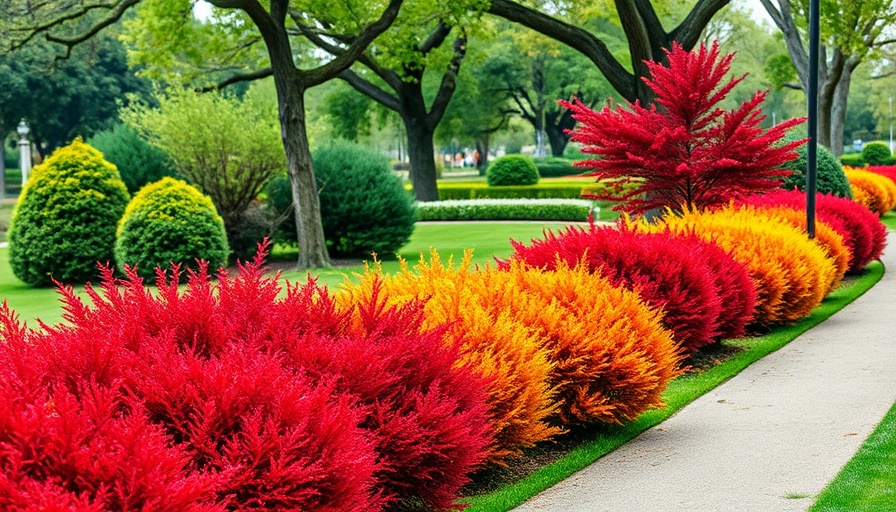
Why Timing Matters: The Art of Pruning Shrubs
As spring unfolds and blooms beckon, gardeners are filled with excitement and an eagerness to revitalize their outdoor spaces. However, before reaching for those pruning shears, it’s essential to understand when and how to prune appropriately. Ignoring the natural flowering cycles can result in losing potential blossoms, leaving us wondering why our shrubs aren’t flourishing. Misalignment with nature isn’t just a gardening faux pas; it symbolizes our hurried lifestyles that often clash with the slower rhythms of the earth.
The Essential Rules of Pruning
In the world of horticulture, knowledge is power. Pruning is not just about aesthetics; it's a science that maintains the health and vitality of your plants. A basic rule to remember: prune shrubs that bloom in summer in early spring. Conversely, for those that flower in the spring, wait until after the blossoms fade. This timing ensures you don’t inadvertently cut off this year’s potential flowers.
Other universal pruning guidelines to consider include:
- Limit cuts to one-third of the shrub or tree to avoid shock.
- Perform light pruning year-round to remove crossed branches and to take care of dead or diseased wood.
- Ensure tools are sharp and clean to prevent spreading diseases among plants.
- Delay pruning newly planted shrubs until their third or fourth year for the best results.
Top Five Shrubs to Prune This Spring
With an understanding of the timing rules in hand, let’s look at five shrubs that eagerly await your spring pruning:
1. Fuchsia
This vibrant flowering shrub delights gardeners, blossoming exclusively on new wood. Although fuchsia typically requires minimal pruning, if it begins to encroach upon your space, a trim is beneficial.
2. Panicle Hydrangea
Also known as Hydrangea paniculata, these hydrangeas, including varieties like 'Limelight,' bloom on new growth. Pruning in late winter or early spring encourages a vigorous blooming season.
3. Red Twig and Yellow Twig Dogwoods
Renowned for their striking bark colors, these dogwoods add winter interest to your landscape. Pruning helps in maintaining vibrant color by removing older, less colorful stems.
4. Butterfly Bush
Ideal for attracting pollinators, the butterfly bush can be pruned quite hard in early spring to encourage healthy, new growth and abundant flowers throughout the season.
5. Weigela
These versatile shrubs are best pruned shortly after blooming, making early spring the perfect time to remove any dead or wayward branches to foster density and shape.
Five Shrubs You're Better Off Leaving Alone
Just as crucial as knowing what to prune is understanding what not to touch. Here are five shrubs that require a gentler touch this spring:
1. Lilac
Beloved for their intoxicating fragrance, lilacs should be pruned after they bloom to retain their blossoms for the season.
2. Azalea
Another spring bloomer, azaleas need to be pruned right after flowering to allow new buds to form for the next spring.
3. Forsythia
This iconic shrub heralds spring with its bright yellow flowers, making post-bloom pruning essential to preserving the beauty of next year's blooms.
4. Rhododendron
Much like azaleas, rhododendrons should only be pruned immediately after their blooms fade to ensure healthy growth moving forward.
5. Boxwood
A versatile shrub for shaping, boxwood can be pruned in early spring but should be handled with care to avoid disrupting its natural form.
Conclusion: Take Action Now!
Armed with this knowledge, you’re ready to take control of your garden this spring. Understanding when and how to prune these shrubs can maximize your bloom potential, creating vibrant displays of color that can exhilarate your landscape. Before you rush outside, remember: the rewards of your efforts will be evident in how lush and healthy your garden thrives. So grab those shears and start navigating the spring pruning landscape with confidence!
 Add Row
Add Row  Add
Add 




Write A Comment